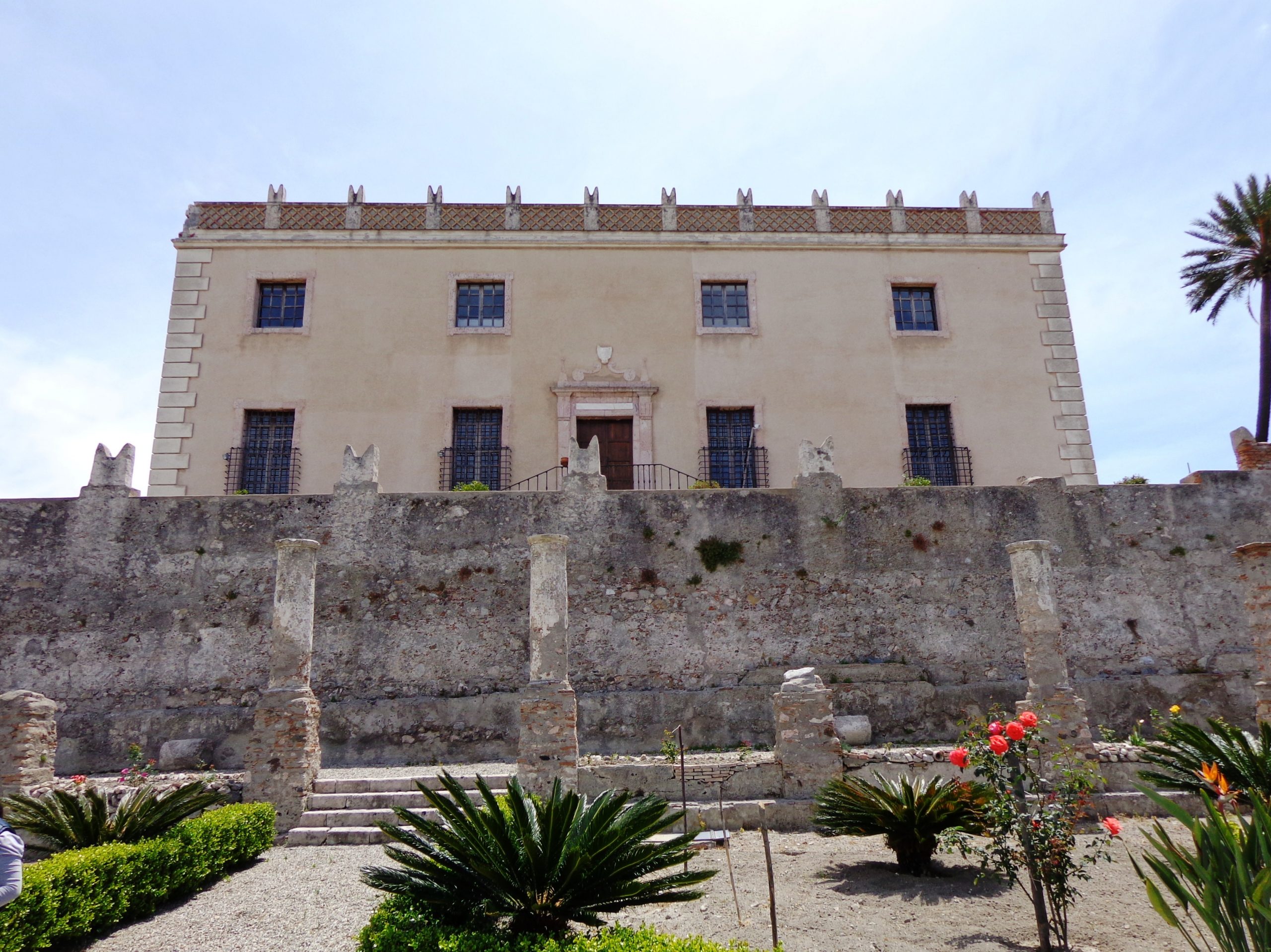
Castello “Bauso” di Villafranca Tirrena
Fu il Conte Stefano Cottone, IV signore di Bauso, a far costruire nel 1590 il primo borgo che ha forma di castello a difesa dalle incursioni da terra e dal mare. Le dimensioni e la fattura dimostrano che l’edificio era solo una residenza secondaria dei Cottone, mentre la fortificazione vera serviva anche ai cittadini del borgo come rifugio nel caso di attacchi da parte di corsari barbareschi, a quell’epoca frequenti in tutta l’isola.
L’edificio, a due elevazioni, presenta grandi finestre e una porta d’ingresso sul lato nord. Anche all’interno la distribuzione degli ambienti, l’atrio, le scale, la tessitura delle murature, ripetono schemi di edifici residenziali. La cinta muraria e i baluardi angolari possono considerarsi soltanto elementi tipici del Castello, ma privi di qualsiasi cautela difensiva
Estintasi con il Principe Carlo la famiglia Cottone, tutti i beni furono acquistati nel 1819 dalla famiglia Pettini, che arricchirono l’edificio di rilievi marmorei e busti con ritratti di antenati.Si deve a loro anche la creazione intorno al castello di uno splendido “Giardino all’italiana” per la cui costruzione sono state utilizzate pietre di colore diverso e vetri multicolori. Al suo interno insiste un laghetto artificiale, habitat favorevole di diverse varietà di piante acquatiche, le grotte “Inferno”, “Purgatorio” e “Paradiso” e opere artistiche di pregio come la “Fontana dei quattro Leoni” attribuita allo scultore fiorentino Giovanni Angelo Montorsoli.
Il castello è stato riaperto al pubblico nel 2003.
(English)
Castle “Bauso” of Villafranca Tirrena
It was Count Stefano Cottone, 4th Lord of Bauso, who had the first village built in 1590 that has the shape of a castle to defend against land and sea raids. The size and the workmanship show that the building was only a secondary residence of the Cottones, while the actual fortification also served the citizens of the village as a refuge in the event of attacks by Barbary pirates, which at that time were frequent throughout the island.
The building, with two elevations, has large windows and an entrance door on the north side. Inside the distribution of the rooms, the atrium, the stairs, the texture of the walls, repeat patterns of residential buildings. The walls and the corner bulwarks can be considered only typical elements of the Castle, but without any defensive caution.
While the Cottone family died, all the assets were purchased in 1819 by the Pettini family, who enriched the building with marble reliefs and busts with portraits of ancestors. They were also responsible for the creation around the Castle of a splendid “Italian Garden” for the construction of which stones of different colors and multicolored glasses were used . Inside there is an artificial pond, a favourable habitat for different varieties of aquatic plants, the “Inferno”, “Purgatorio” and “Paradiso” caves and valuable artistic works such as the “Fountain of the Four Lions” attributed to the Florentine sculptor Giovanni Angelo Montorsoli.
The Castle was reopened to the public in 2003.